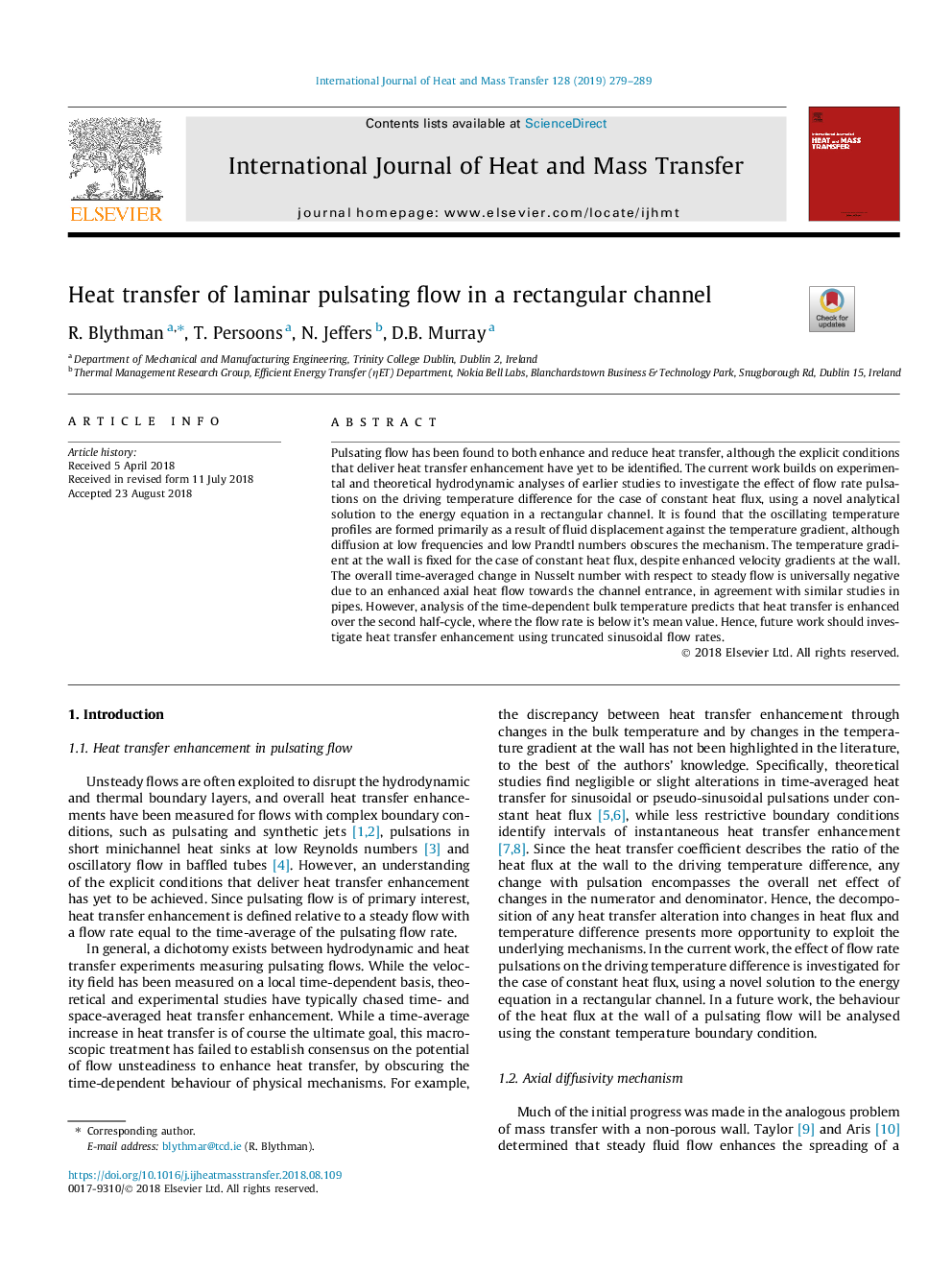| Article ID | Journal | Published Year | Pages | File Type |
|---|---|---|---|---|
| 10139873 | International Journal of Heat and Mass Transfer | 2019 | 11 Pages |
Abstract
Pulsating flow has been found to both enhance and reduce heat transfer, although the explicit conditions that deliver heat transfer enhancement have yet to be identified. The current work builds on experimental and theoretical hydrodynamic analyses of earlier studies to investigate the effect of flow rate pulsations on the driving temperature difference for the case of constant heat flux, using a novel analytical solution to the energy equation in a rectangular channel. It is found that the oscillating temperature profiles are formed primarily as a result of fluid displacement against the temperature gradient, although diffusion at low frequencies and low Prandtl numbers obscures the mechanism. The temperature gradient at the wall is fixed for the case of constant heat flux, despite enhanced velocity gradients at the wall. The overall time-averaged change in Nusselt number with respect to steady flow is universally negative due to an enhanced axial heat flow towards the channel entrance, in agreement with similar studies in pipes. However, analysis of the time-dependent bulk temperature predicts that heat transfer is enhanced over the second half-cycle, where the flow rate is below it's mean value. Hence, future work should investigate heat transfer enhancement using truncated sinusoidal flow rates.
Related Topics
Physical Sciences and Engineering
Chemical Engineering
Fluid Flow and Transfer Processes
Authors
R. Blythman, T. Persoons, N. Jeffers, D.B. Murray,
